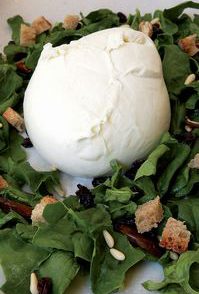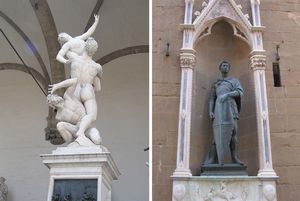Weaving through the crowd at Piazza della Stazione, you are assaulted by the noise and the crush of people that is ever present in Florence’s busy city center. The brown brick backside of the Basilica of Santa Maria Novella, an oddly anachronistic image juxtaposed with the city buses and street vendors huddled around it, catches your eye, and you head towards it. The scaffolding covering the fifteenth-century façade makes you sigh, but you decide to duck in for a few minutes regardless.
You are immediately glad that you did, for the cool calm of the spacious basilica is a welcome respite from the chaos outside. Here, there are few tourists and fewer signs of busy modernity, and you soak in the feel of a past era. While admiring the breathtaking frescoes, you bump into nine friends also looking for refuge, and you make plans to escape the city to Fiesole for the weekend.
You have just unknowingly reproduced the beginning of Giovanni Boccaccio’s tantalizing masterpiece The Decameron. This raunchy romp through fourteenth-century society is set in 1348, in the midst of the plague that devastated Florentine society. The narrative action commences when ‘one Tuesday morningseven young ladies were to be found in the venerable church of Santa Maria Novella, which was otherwise almost deserted’.
The Santa Maria Novella of Boccaccio’s day differed from its present appearance, but the alterations are not as great as one might imagine. The grand Dominican church was constructed in the first half of the fourteenth century, and it was completed around the time of the onset of the plague. The modern day visitor may marvel at its famed decorations, from Masaccio’s famous Trinity to Ghirlandiao’s frescoes for the massive Tournabuoni Chapel, but at the time of The Decameron Santa Maria Novella was without ornament, with the exception of a fresco by Duccio and a crucifix by Giotto. Alberti’s fifteenth-century façade had not yet been added either; instead, a stark brick façade served as the division between the horrors outside and the church within.
Despite the more recent adornments, it is easy to imagine Boccaccio’s seven fair ladies sitting in a circle, reciting their prayers and debating the best course of action to escape the plague. The peaceful, open interior invites you to think back to Boccaccio’s day, when Santa Maria Novella served as one of the few safe havens within a world driven mad. Its high cross vaults, rhythmic series of columns, and nearly monochrome interior would have reminded these young ladies of the existence of beauty, tranquility, and harmony amongst the squalor of daily existence and affirmed the creative power of man to reach for the heavens. Perhaps it can do the same for us today.
Far from being a random selection, Boccaccio’s choice of Santa Maria Novella as the opening for The Decameron also demonstrates his legendary sense of humor and joy at playing with language. On a literal level, novella is simply part of the name of the basilica, but it is also the Italian word for a short story or novel. This tongue-in-cheek reference to story telling helps prepare Boccaccio’s readers for the supreme narrative complexity of The Decameron and warns them of the ironic, ambiguous novel to come. Boccaccio is certainly not afraid to blend light, superficial humor with weighty issues, like religion, sexual freedom, and women’s rights.
In the midst of their discussion and meditation, the ladies are joined by three young men, and the group of 10—Boccaccio loved to play with numbers as much as his contemporaries—set off for one of their many country estates in Fiesole to flee the horrors of the plague. Boccaccio’s descriptions of the Tuscan countryside, with its ‘fresh green hills and plains, fields of corn undulating like the sea, and trees of at least a thousand different species’, are as vivid as his portrait of Santa Maria Novella. Among this natural beauty, our narrators amuse themselves by telling 100 stories, setting up the framework for Boccaccio’s virtuoso production.
Whether in the heart of a Dominican basilica or in the idyllic countryside, Boccaccio paints a vivid picture of the landscapes of fourteenth-century Italy. He was one of the many writers inspired by ‘the noble city of Florence, which for its great beauty excels all others in Italy’, and this Florentine setting provides a very real backdrop for the fantastic narrative jaunts around the world. Next time you visit Santa Maria Novella, see if you can make out the faint outline of seven beautiful ladies, wrecked by the horrors of the plague but also touched by the beauty of art.






